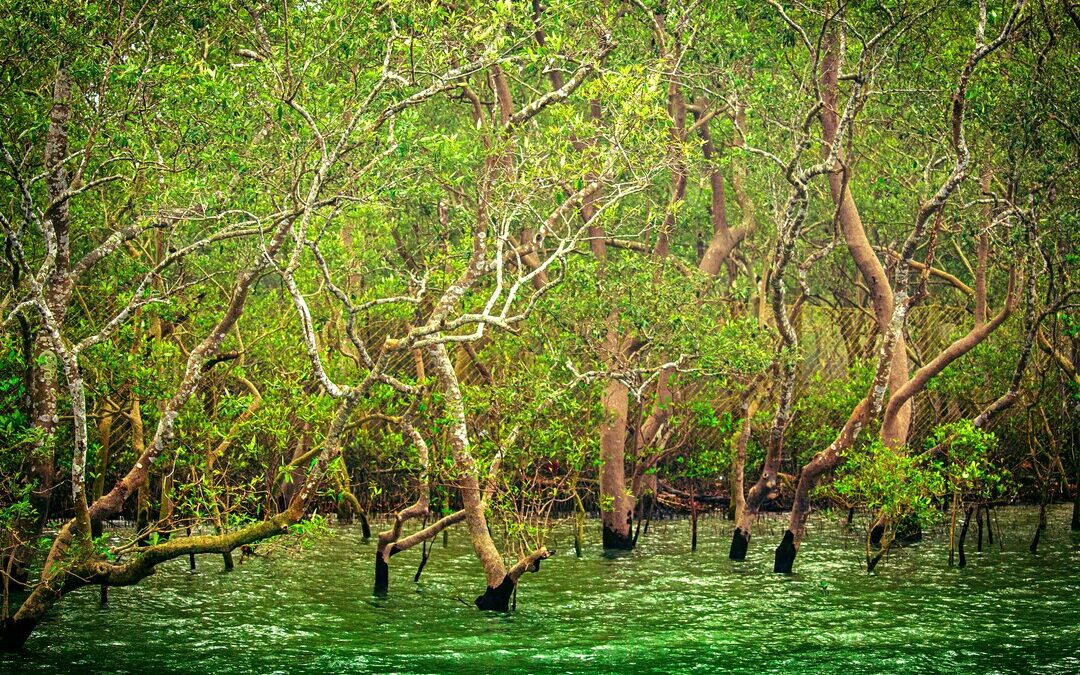Blue Carbon Ecosystems Store Half of Ocean Carbon but Face Global Neglect
Blue Carbon ecosystems store half of the ocean’s carbon yet remain overlooked in global climate policies and coastal resilience strategies.
Mangroves, seagrasses and tidal marshes cover just 2 percent of the ocean yet store about 50 percent of all carbon locked in ocean sediments, according to a new study by the World Resources Institute.
Despite this outsized role in slowing global warming, only 15 countries have included blue carbon ecosystems in their latest climate commitments.
The paper warns that the continued loss of these ecosystems risks releasing vast stores of carbon dioxide back into the atmosphere.
Between 2010 and 2020, an average of 1,024 square kilometers of mangroves were lost each year, while seagrass meadows shrank by an estimated 7 percent annually. Net tidal marsh loss totaled 4,000 square kilometers between 1999 and 2019.
Protecting what remains could avoid 0.304 gigatons of carbon dioxide equivalent annually, while restoring degraded ecosystems could capture a further 0.841 GtCO2e each year. Those figures rival the annual emissions of some mid-sized industrialized countries.
“The evidence shows these ecosystems are indispensable for both mitigation and adaptation, yet they remain undervalued in global policy,” lead author Micheline Khan said in the report.
Limited Uptake in National Policies
As of Aug. 31, 2025, only 35 nations had submitted updated Nationally Determined Contributions following the Paris Agreement’s Global Stocktake. Just 15 explicitly included blue carbon in their plans, with most updates still expected before November’s COP30 summit in Brazil.
Khan noted that historical challenges in measuring sequestration delayed their inclusion. Standardized methodologies under the Intergovernmental Panel on Climate Change now allow governments to account for carbon stored in wetlands with greater credibility.
Even so, political fragmentation and gaps in technical capacity remain barriers. “We need policy alignment across biodiversity, climate and ocean frameworks if countries are to unlock the full potential of blue carbon,” Khan said.
The BLUE Framework
To address these obstacles, the authors propose a four-stage integration process called the BLUE framework: Build awareness and enabling policies, Link ecosystems to national plans, Unlock finance and scale efforts and Embed monitoring and evaluation.
The framework is designed to be flexible, recognizing that countries differ in data availability, institutional capacity and political will. By following these steps, the report argues, governments can align blue carbon with biodiversity strategies, sustainable ocean plans and broader climate agendas.
Co-Benefits for Communities
Beyond climate, blue carbon ecosystems buffer coasts from storms, prevent erosion, improve water quality and sustain fisheries. Their cultural and economic roles are vital for coastal communities that depend on them for livelihoods and food security.
Healthy mangroves and seagrasses also support ecotourism and strengthen social cohesion by sustaining cultural identities linked to the ocean. “Investments in blue carbon are not just about cutting emissions; they are about securing resilient futures for communities on the front lines of climate change,” Khan said.
Financing and Governance Gaps
Despite growing recognition, blue carbon financing remains limited. The report calls for targeted mechanisms, including carbon markets, blended finance and technical support for Indigenous and local communities engaged in conservation.
Policy reform is also needed to restrict destructive development and pollution that drive ecosystem decline. Regulatory changes in agriculture, aquaculture and infrastructure can deliver passive restoration by reducing pressures on coastal systems.
Urgent Need for Action
The Global Biodiversity Framework sets targets to restore 30 percent of degraded ecosystems and protect 30 percent of land and sea by 2030. Meeting these goals will require stronger political will and integration of blue carbon into both mitigation and adaptation strategies.
Without such action, the report warns, blue carbon ecosystems will continue to disappear at alarming rates. That trajectory threatens not only global climate goals but also the resilience of billions of people living along coasts.
“Time is running short,” Khan said. “If we fail to safeguard these ecosystems, the costs will be measured in lost carbon storage, weakened resilience and diminished livelihoods worldwide.”
Also Read:
Oyster Farms Emerge as Key Players in Cutting Carbon Dioxide Emissions
Nirmal Menon
Related posts

Subscribe
Error: Contact form not found.


